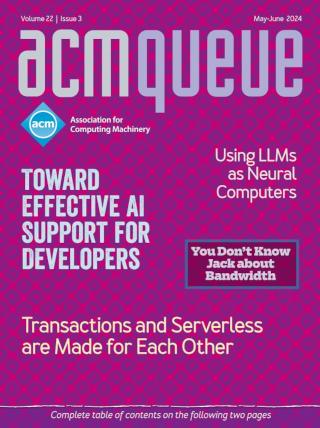
Discrimination in Online Ad Delivery:
Google ads, black names and white names, racial discrimination, and click advertising
Do online ads suggestive of arrest records appear more often with searches of black-sounding names than white-sounding names? What is a black-sounding name or white-sounding name, anyway? How many more times would an ad have to appear adversely affecting one racial group for it to be considered discrimination? Is online activity so ubiquitous that computer scientists have to think about societal consequences such as structural racism in technology design? If so, how is this technology to be built? Let’s take a scientific dive into online ad delivery to find answers.
Eventual Consistency Today: Limitations, Extensions, and Beyond:
How can applications be built on eventually consistent infrastructure given no guarantee of safety?
In a July 2000 conference keynote, Eric Brewer, now VP of engineering at Google and a professor at the University of California, Berkeley, publicly postulated the CAP (consistency, availability, and partition tolerance) theorem, which would change the landscape of how distributed storage systems were architected. Brewer’s conjecture--based on his experiences building infrastructure for some of the first Internet search engines at Inktomi--states that distributed systems requiring always-on, highly available operation cannot guarantee the illusion of coherent, consistent single-system operation in the presence of network partitions, which cut communication between active servers. Brewer’s conjecture proved prescient: in the following decade, with the continued rise of large-scale Internet services, distributed-system architects frequently dropped "strong" guarantees in favor of weaker models--the most notable being eventual consistency.
A File System All Its Own:
Flash memory has come a long way. Now it’s time for software to catch up.
In the past five years, flash memory has progressed from a promising accelerator, whose place in the data center was still uncertain, to an established enterprise component for storing performance-critical data. It’s rise to prominence followed its proliferation in the consumer world and the volume economics that followed (see figure 1). With SSDs (solid-state devices), flash arrived in a form optimized for compatibility - just replace a hard drive with an SSD for radically better performance. But the properties of the NAND flash memory used by SSDs differ significantly from those of the magnetic media in the hard drives they often displace. While SSDs have become more pervasive in a variety of uses, the industry has only just started to design storage systems that embrace the nuances of flash memory. As it escapes the confines of compatibility, significant improvements in performance, reliability, and cost are possible.





